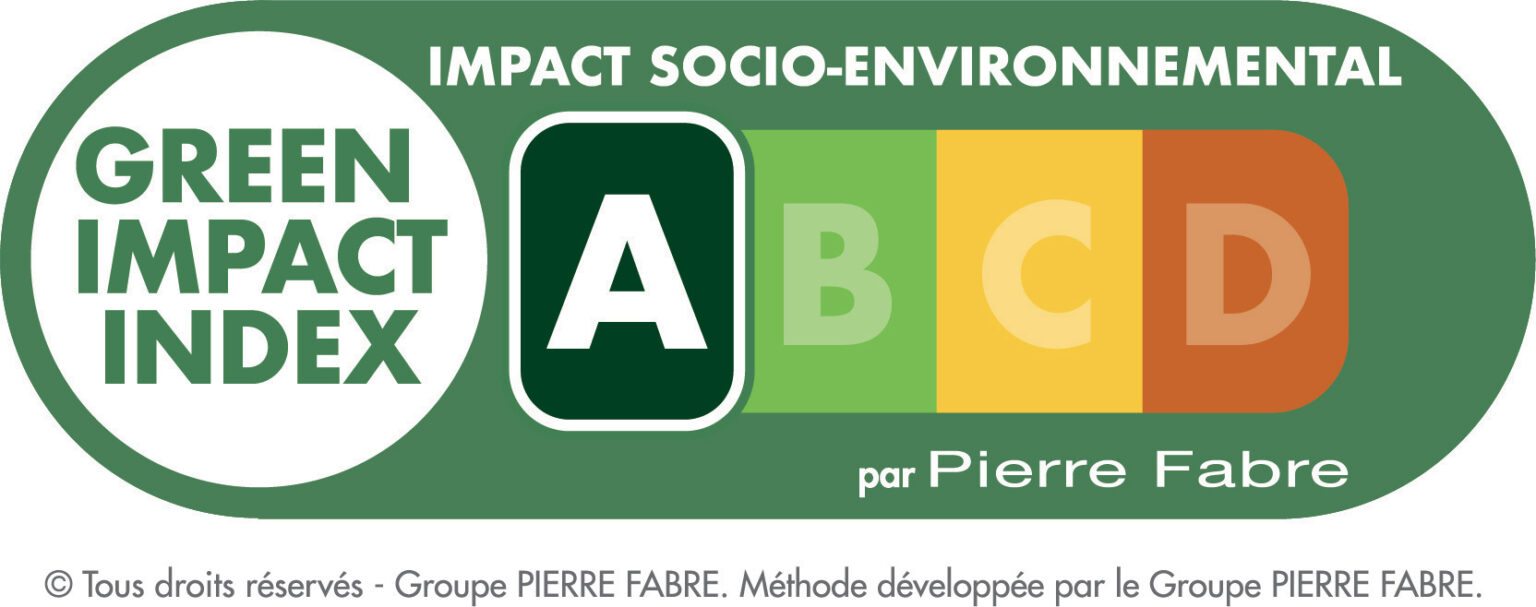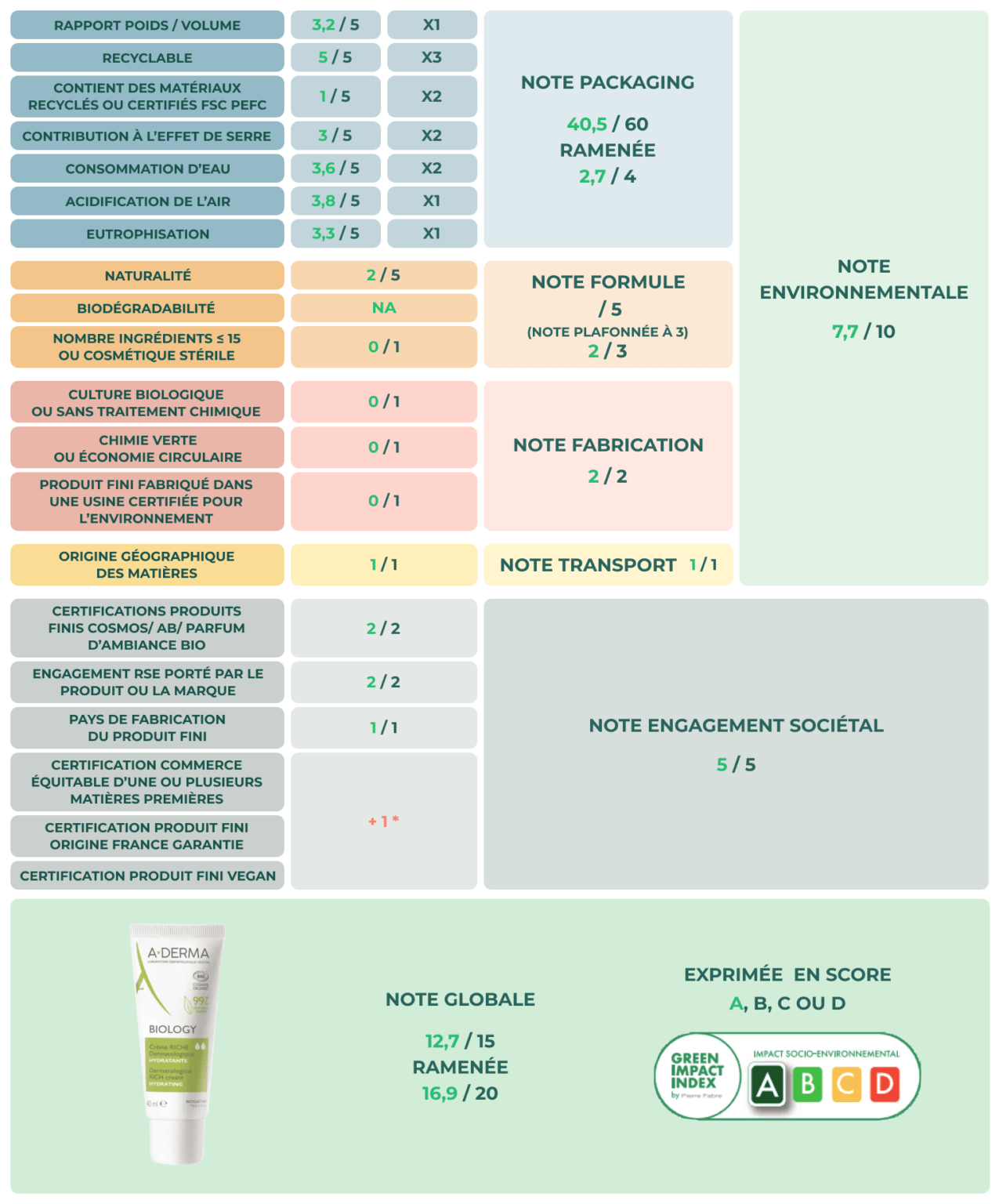Cosmetic products are everywhere, you’ve used them since you were a child without asking yourself too many questions. It’s a need, whether you buy it as a finished product or make it yourself by obtaining the ingredients. It’s hard to brush your teeth without using a paste or solid toothpaste, just as it’s hard not to apply anything to your skin when it’s tight.
If you are one of those who pay attention to their consumption for an ecological purpose, know that some criteria are more important than others when shopping. But as a user, how to orient yourself?
So that the entire environmental mental load does not fall exclusively on the consumer, various labels have already existed for many years. But manufacturers also want to add their stone to the building and this is the case with the group Pierre Fabré.
This French pharmaceutical and dermocosmetic group has developed the Green Impact Index. It is an indicator that appears on all the products of the group’s brands, such as Klorane, Avène, A-derma, Ducray, Klorane and Dexeryl or even Elgydium.
An indicator for better consumption of cosmetics
This tool was designed by Green Mission Pierre Fabre, which covers the topics of CSR (Corporate Social Responsibility), naturalness and sustainable development of the Pierre Fabre Group and which guarantees that 100% of all new products are eco-friendly designed.
In summary, the green impact index it is an indicator that helps to understand the impact of the environmental and social footprint of the care products selected by consumers. The process has been evaluated and approved by an independent third party certification organization AFNOR.
Comprehends an environmental note which takes into account: the eco-design of the packaging, the environmental profile of the formula, the environmental impact of product manufacturing and the location of the suppliers of the raw materials contained in the product. Also assign a note on social commitment which includes: production in a French factory or in a factory applying French social norms, certifications such as fair trade, organic, etc.
everything this represents no less than 20 criteria. In order not to lose users imbued with good intentions, it was necessary to think about the Green Impact Index visually to be as clear as possible. Inspired by an indicator already known to the general public used for food products, the Green Impact Index will present an A or B rating which will make it possible to affirm that the product is eco-socio-design.

All criteria give a score of 20 with an environmental score accounting for two-thirds and a social score accounting for one-third. If the product has an A or B grade, i.e. between 10/20 and 20/20, it is eco-socio-design. Obviously, some criteria are more important than others in the environmental footprint left by a cosmetic on the planet.
Three social criteria that should be kept in mind when buying cosmetics
When evaluating the impact on the planet, most people will naturally think of the environment. However, the Green Impact Index is also interested in social criteria. This is the only indicator of its kind that takes this into accountwhile they are not left out as they clearly illustrate what the company does for society.
Furthermore, here are three criteria that it is interesting to pay attention to in order to be aware of what it means to buy one cosmetic rather than another:
The country of manufacture of the finished product
The country of origin of a product is an excellent indicator for the consumer. Himself, this criterion gives an idea of social and environmental standards manufacturing and production. Made in France is the guarantee of working conditions and social protection for the employees who manufacture these products. Furthermore, this also ensures factories governed by environmental regulations that are globally among the strictest in the world. This thus contributes to the dynamism of the territories, especially for Pierre Fabre, who manufactures his cosmetics in the southwest.
The product contains at least one fair trade raw material
This criterion is a kind of bonus point in scoring Green Impact Index. However, he says a lot about the company’s social commitment. In order for everyone to have the same level of information, it should be explained that to talk about fair trade, the sector concerned must be certified right for life Where is it International fair trade by the independent organization ECOCERT.
But what exactly is it? Here is the definition given by Green Mission Pierre Fabre:
“A fair trade product guarantees a fair price for the producer, respect for people and the environment for all links in the supply chain and transparency for all players. In fact, shorter and more transparent commercial supply chains allow producers to make a dignified living from their work and to be actors in their development model”

CSR commitment carried by the brand or product
This criterion illustrates how the brand or product range is specifically committed to biodiversity or people. To be considered, its duration must be at least three years.
This commitment can take various forms: the protection of biodiversity, therapeutic education (prevention, physical activity, etc.), support for patient associations, health professionals, communities, producers or the fight against precariousness.
For example, the René FURTERER brand through its commitment to its sector
Plante Karité in Burkina Faso, allowed the creation of a kindergarten in September 2020 for women who harvest shea with a capacity of ten children. That way, they can go back to work once the postpartum period is over. This allows them to be more financially stable during the first four years of their child’s life.
Three environmental criteria that are worth checking when buying cosmetics
Among the fourteen environmental criteria, the following three elements are decisive in the environmental score. Furthermore, two of them concern packaging. For a good representation, on the totality of the environmental impact of a cosmetic, the impact of the packaging amounts to 40%.
The environmental impact of packaging
These data correspond to four criteria: its contribution to the greenhouse effect, the quantity of water that required its manufacture, its contribution to the acidification of the air and the eutrophication of water, i.e. its quality. As a consumer, these four elements are verified through the materials used for its manufacture.
The packaging respects the rule of the three Rs
The three Rs are respectively: recycling, recycled and weight/volume ratio. To go into more detail, recycling is not an unknown factor. However, not all packaging is recycled to the same scale. This criterion is also part of a circular economy. Indeed, the recyclability rate of a product’s packaging will not only give consumers a good conscience; it also allows you to enter a cycle of job creation, as well as reuse and transformation of materials.
The second R directly refers to the integration of recycled materials which forms a virtuous circle with the first R. As for the last R: weight to volume ratio, it happens quite quickly. In the best of worlds, good packaging will contain a maximum of product in a minimum of packaging.
The biodegradability of the cosmetic formula
Even with all the research tools out there, it is still difficult to measure the impact of a formula on the environment. One thing is certain though, from stepping into the shower the cosmetics begin a long journey to the sewers. And biodegradability can be measured on rinse-off products like shampoo or conditioner.
In other words, they end up in sewage treatment plants. It is therefore wise to favor a biodegradable formula, ie which can be decomposed by biological organisms (bacteria, fungi, algae, etc.) present in the sludge of these stations. These are the organisms that do the job of treating our wastewater, which is why our formulas are tested on these station sludges to verify their biodegradability is effective.
Consuming in a more reasoned way is not easy. However, some criteria can help you. But reading an INCI list (list of ingredients) isn’t for everyone… it doesn’t indicate everything and says nothing about the impact of ingredients on the planet. It is for this reason that an indicator that takes into account 20 criteria is more than interesting for those most concerned about ecology.
the Green Impact Index can help make the consumption of cosmetic products more reasoned. Sure, Rome wasn’t built in a day, and the miracle won’t happen in a day, but the positives attract the positives.
The Green Impact Index is a tool that evaluates the socio-environmental impact of the skincare products you select.
Finally, having a tool is good. Knowing how to use it is better!
For this, Pierre Fabre has imagined a program called BEHIND THE INDEX. A complete program to help decipher and evaluate the products in the bathroom. A complete media to decipher and help decipher the cosmetics that surround you, thanks to the Green Impact Index, but to many other information, to be discovered over the weeks.
Behind the Index is:
- Frequent decryptions (products, innovations, etc.)
- A fun way to understand the Green Impact Index
- Give yourself the means to consume better
Credits: photo by Sora Shimazaki/Pexels
Photo by Ron Lach/Pexels
Build Madmoizelle’s future with us by answering these questions!
All about
Cosmetic ingredients
-
Beauty focus on CBD, this sulphurous active ingredient with multiple talents
-
What are the most effective anti-acne active ingredients?
-
All about bakuchiol, this active ingredient that fights both acne and wrinkles
-
Did you know ? Some aesthetic treatments are not compatible with others…
-
This is why ceramide-rich cosmetics are essential for the skin
-
The benefits of olive oil for hair: tips for use
-
Christmas gift ideas for men: 8 skin care sets to start the year in style
Source: Madmoizelle
Mary Crossley is an author at “The Fashion Vibes”. She is a seasoned journalist who is dedicated to delivering the latest news to her readers. With a keen sense of what’s important, Mary covers a wide range of topics, from politics to lifestyle and everything in between.




